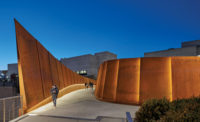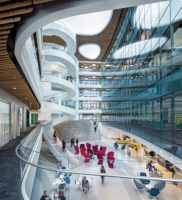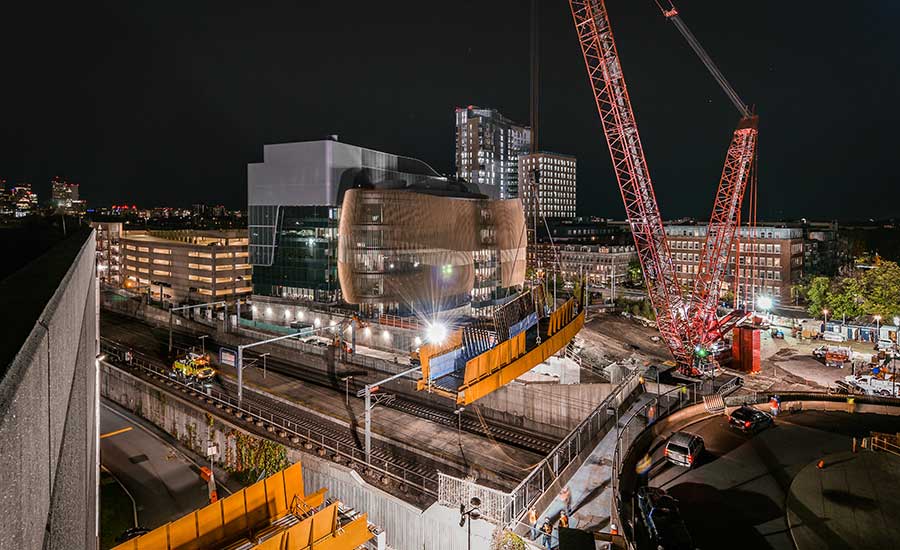Payette-led Bridge Spans Rail Corridor to Unite Northeastern’s Campus

Photo © Payette, image by Tanguy Marquis

Photo © Payette, image by Tanguy Marquis

Photo © Payette, image by Tanguy Marquis

Photo © Payette, image by Tanguy Marquis

Photo © Payette, image by Tanguy Marquis

Photo © Payette, image by Tanguy Marquis

Site Plan
Image © Payette

Rendering
Image © Payette

Rendering
Image © Payette









A new pedestrian bridge linking Northeastern University’s main campus with its expanding science and engineering campus across a divide of five railway lines got a major boost this past weekend. In the early hours of Sunday morning, after the last train had cleared the flood-lit site, one of the largest cranes on the East Coast hoisted a 242,000-pound, 132-foot steel span over the tracks. Placement of the section, together with a shorter segment craned into place the night before, marks a milestone in the development, scheduled for completion next spring, that will also connect Boston’s long-separated Fenway and Roxbury neighborhoods.
“The vision for the bridge was to make an event—an artistic experience—of the crossing, born out of a sense of flow and movement,” said Robert Schaeffner, a principal with Boston-based Payette Architects, at a midnight master class held prior to the crane lift. (It’s uncommon for an architect to lead the design of a bridge. Payette’s role arose from the client’s concern to maintain aesthetic harmony between the new connector and the first, Payette-designed, academic building on the other side.)
To generate the desired sense of flow and movement where none existed before, the structure takes a sinuous and asymmetric form inspired by the new precinct’s design parti of “pebbles in a stream.” And although the form may appear to be willful, said Patrick McCafferty, associate principal at the local office of Arup, structural engineers for the project, in this case, “beauty lies at the confluence between formal restraint and formal driver.” The form is an organic resolution of the factors in play: specific site boundaries, geometric constraints imposed by the rail authorities, preferred views, and the desire for a dynamic quality to draw pedestrians across.
Weathering steel plates forming the eastern parapet are canted outward in plan, like gills, to provide glimpses of the new precinct and the city beyond. The western parapet, in places more than 16 feet high, incorporates a welded steel box beam that performs the bridge’s heavy lifting, and also integrates path lighting along the length of a fluid line in the steel. Both parapets are tilted outward from the vertical to open the space between them to the sky. At their ends, they dissolve into a cut latticework that will enhance the bridge’s openness, and make visible the movement of pedestrians as they come and go across this dramatic new element in Boston’s urban fabric.
Time-lapse video © Payette, video by Tanguy Marquis




-High-Caliber-Captures.jpg?height=200&t=1725895765&width=200)








